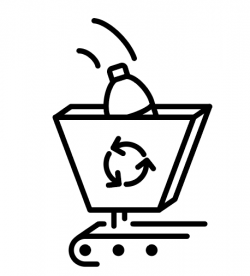Based on your life experience, skills and interests, what would a design process that is both uniquely yours and effective look like?
When I’m presented with a problem that I don’t know the answer to, I almost always go to my friends or classmates and ask them how they would approach it. I like building off of what people have done and adding my insights to theirs and coming up with a new solution. I think that this comes from my lifetime involvement in team sports. In both ice hockey and rowing, its impossible to do anything by yourself. You need your teammates to make hockey plays and to race in the 8-man shells. I feel like I am most valuable when working in a team. I like dividing and conquering tasks to streamline work but also having periodic check-ins with a full group to get everyone up to speed.
How will you validate your project concept, technology, usability, operational / business model?
I would validate my project by showing that there are many people collaborating on my project. This would help give my project credibility because if there are more minds working on the same problem, there are more chances that people will catch any potential flaws. They would be able to look at the problem in different ways and see it in different lights. People of many different backgrounds can specify their focuses and really concentrate on small issues. Then when teams get together they can smooth over the seams between the individual issues. I think that I would validate the usability of technology by creating many prototypes and doing extensive testing with them.
Articulate your philosophy of engagement with communities, partners, and markets.
I think that the purpose of project, especially in this fellowship, is to benefit the communities. Since that’s such an important aspect of projects, I believe that the people involved with the project need to be completely transparent with the community. Project managers need to listen to those who live in the community and really understand their culture and needs before they can even start to formulate an idea of how to give them a hand up. Additionally, members of the community will be the ones taking over the endeavor so they need to be completely aware of what is going on. I think that it is equally important to be engaged with partners and the markets. Working closely with business partners is a really good idea because then there are more people invested in the success of the project. Additionally, staying engaged with the markets means that you have a good idea of market demands so that your product will be able to sell and your business will stay afloat.
